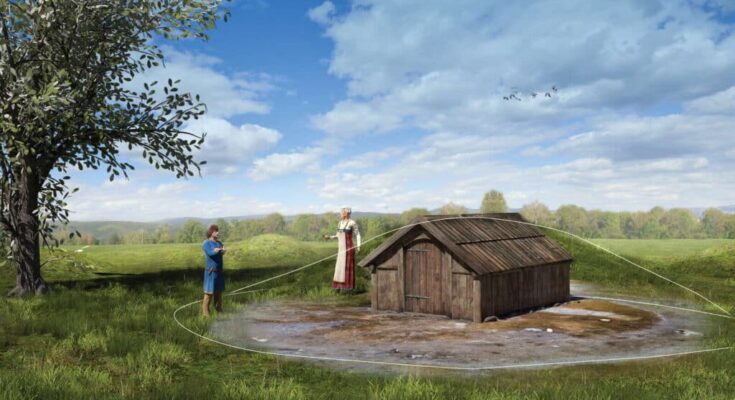
Researchers Dr. Raymond Sauvage and Dr. Richard Macphail recently shared their findings in the field of Medieval Archaeology. They uncovered and studied three ancient Iron and Viking Age mortuary houses in central Norway, located in the village of Vinjeøra.
These structures, dating from AD 500 to AD 950, were likely used in funerals. The discovery suggests that people during that time may have built these houses to visit and remember the deceased.
Between 2019 and 2020, road construction plans led to further excavations, confirming the presence of a pre-Christian cemetery. This cemetery was first partially uncovered in a test dig back in 1996. To the researchers’ surprise, they found three mortuary houses alongside flattened burial mounds.
The purpose of mortuary houses
Mortuary houses, often found in cemeteries, serve various purposes. They may hold graves, tombs, or even store the ashes of the deceased. In some cases, these structures were used by the living to leave offerings or to honor and remember their dead.
The mortuary houses found across Scandinavia likely had similar roles, but the ones in Vinjeøra stand out. Unlike other such structures in Norway and Sweden, the Vinjeøra houses did not contain any human remains.
Sauvage noted that this was unexpected. He explained that they found no evidence of a permanent tomb or a person buried inside these houses.
Shout-out for #Hogbacks!@SocMedArch has an #OpenAccess article on Viking-Age houses of the dead, which references hogbacks in Britain.
Ritual Practice at Late Iron-Age and Viking-Age Cemeteries in Norway: The Mortuary Houses From Skeiet, Vinjeøra
— The Govan Stones
(@GovanStones) August 27, 2024
He was also surprised to discover that the houses had doors and entrances that could lead into both the mortuary house and the burial mound, something he had not anticipated before analyzing the site.
The presence of doors and entrances indicates that the mortuary houses were designed to remain open, allowing the living to return and visit the interiors. The soil at the entrance was heavily trampled upon, confirming that people frequently visited these sites. Moreover, the entrances were low, requiring visitors to crouch as they entered the houses.
Construction dates of each mortuary house
Sauvage explained that it was not unusual for the entrances to be low, requiring visitors to crouch. He noted that the small and dark interiors of the mortuary houses would have been partially illuminated by the light coming through the door and mentioned that most mortuary houses he was familiar with were similar in size.
The dates from the Vinjeøra mortuary houses reveal that the first structure was built between AD 450 and 600 during the Iron Age. At that time, cremation was the main burial practice.
A second structure was added around AD 600 to 800, a period when the cemetery began shifting towards more inhumations, where bodies were buried rather than cremated.
However, the third mortuary house was constructed between AD 800 and the late 900s. By then, inhumation had completely replaced cremation as the preferred burial method.






